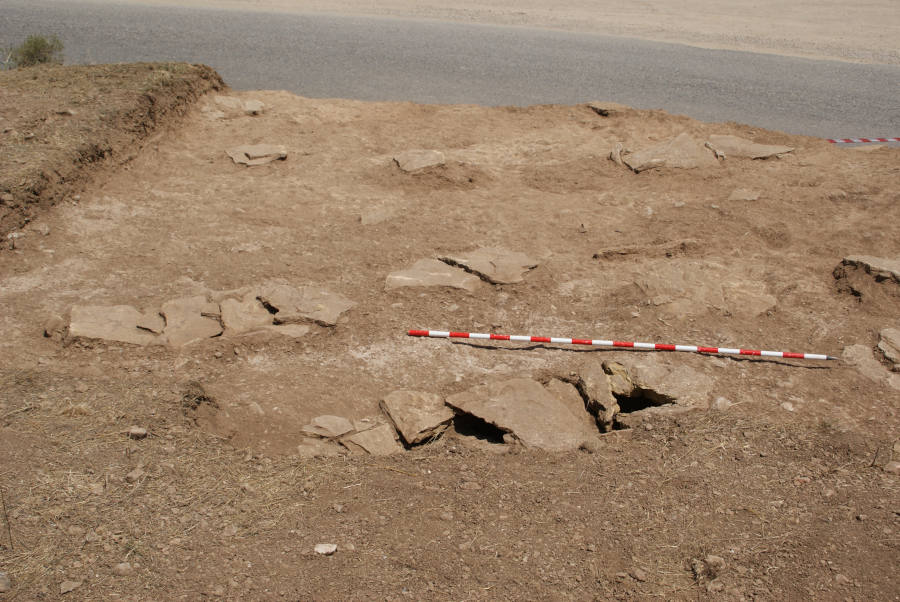Santa Coloma of Àger

The first documentary reference to the church of Santa Coloma is from the year 1048 due to the endowment of Sant Pere d'Àger made by Arnau Mir de Tost and his wife Arsenda. A second reference is from 1101, where it is mentioned in the act of consecration of Sant Nicolau d'Àger.
The archeology of the site dates back to 1904 when the necropolis was discovered. The first archaeological intervention was in 1983 and 1984 directed by Francesc Fité and Prim Bertran. Part of a necropolis of cist tombs, a necropolis of sarcophagi and the early Christian basilica of the 6th-7th centuries were documented. In 1997, as part of a preventive excavation for the imminent construction of an agricultural warehouse, part of the early medieval necropolis, made up of simple anthropomorphic graves, was located and excavated. In 2011, a small excavation was opened to recreate an excavation of a medieval necropolis for the television program Sota Terra. In 2014 and 2015, under the direction of Jesús Brufal and Antonio Porcheddu, new archaeological evidence was located and documented that would make up rooms adjacent to the basilica and at the same time verify the greater extent of the necropolis with sarcophagi. In 2018, Jesús Brufal and Àngela González opened a new survey in the north-eastern sector of the site and located another sector of the high medieval necropolis of simple and anthropomorphic graves. Finally, in 2022, Jesús Brufal and Àngela González also intervened in the archaeological work of 2015. The survey was recovered and larger funerary structures of context, probably from late antiquity, were located.
The Santa Coloma site is made up of a funerary complex from which a basilica and a set of rooms contain burials in sarcophagi, cist and wooden coffins. We relate the historical context of use between the end of the 5th century and the 7th century. From the 7th to the 11th century, and around this complex, an enormous necropolis was used until the 40s of the 11th century, when the conquest of Arnau Mir de Tost incorporated this territory in the domains of the county of Urgell and the Roman church. Santa Coloma d'Àger allows us to visualize how a rural community maintains Christian rituals from the 5th to the 11th century, remembering that from the 8th to the 11th century, the Àger valley was part of the Andalusia. At the same time, the bioarchaeological study, directed by Júlia Olivé, of the individuals (currently 127) is x-raying in detail the evolution of agricultural production, food, health and migratory patterns in this territory.